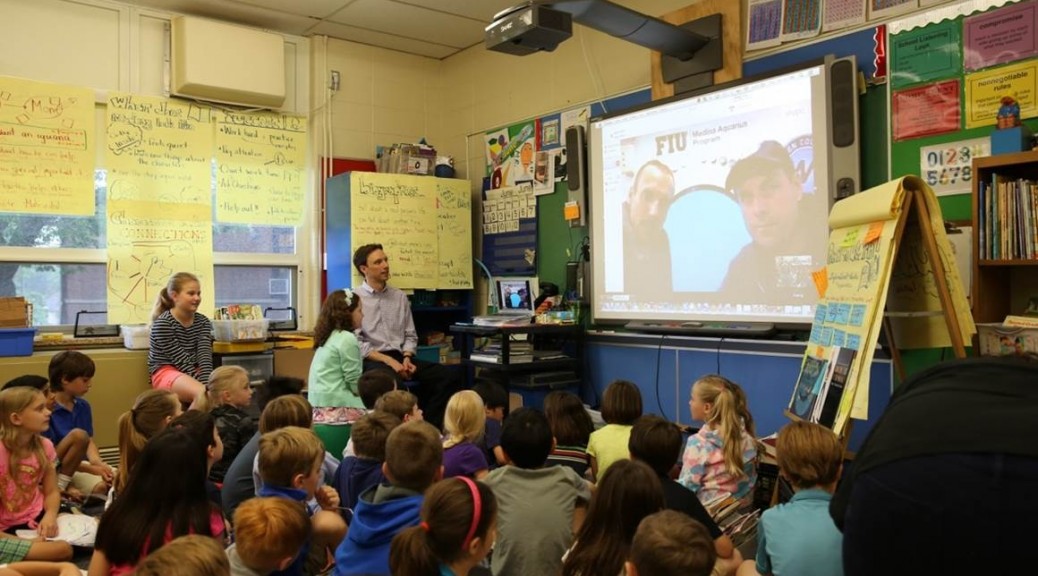In June 2016, GreenEdge scientists will leave for 2 months in the Arctic aboard the research icebreaker CCGS Amundsen. They will carry out observations intended to improve their understanding of the behaviour and the role of the marine ecosystem in Baffin Bay.
Within this framework, the scientific team will set up an original and innovative teaching device intended for primary school students (8-10 years), which will enable them to discover the Arctic (environment and population), the scientific and non-scientific crews of the Amundsen, and the challenges of the undertaking research in the area.
The educational project will be carried out in several stages:
In the partner schools’ classes, during spring 2016
A future member of the research icebreaker mission will meet with 5 classes in partner schools from the IIle-de-France region to present our scientific mission. The students will work as groups in order to identify a certain number of questions (a confounded set of themes: science, environment, life on board, icebreaker, etc.). The choice of topics covered will be made in line with the state education programs. The students will provide assumptions with respect to the responses to their queries. The students will be recorded asking the selected questions (on video if parental authorization is obtained, otherwise by audio). The students will contribute to the video and sound recordings.
Aboard the research icebreaker Amundsen, end of June 2016
The team members with distinct roles (example: female scientist, chef, mechanic, journalist/communicator) will be identified to answer the students’ questions. Their video portraits will make it possible to show the diversity of trades needed to conduct a scientific mission and to break certain stereotypes.
Short-films of one to two minutes in length will be produced in response to each identified question (while answering directly to the students).
During the research icebreaker mission, if technically possible, a videoconference will be organized with the 5 partner classes, enabling them to interact directly with the team members, live from the Arctic.
Return from the mission, August 2016
The short-films will be assembled with the following structure: a question by student/several assumptions of the students/answer by a team member aboard the Amundsen. The short-films will be developed within the context of a web-documentary intended for students, in quiz form, describing all of the aspects of the scientific expedition (science, environment, life on board, icebreaker…). It will be available online on the AOA education site and will complement the educational capsules and modules that are already online.
Festival of Science 2016, October 2016
A video conference with one or more members of the Admundsen scientific expedition will be offered to classes in the Ile-de-France area during the Festival of Science week. This will be the occasion for the students to interact directly with the crew of the mission through a question and answer game.
The web-documentary, created with the assistance of students of the same age from the area, will be presented. This format will allow the students to continue discovering the scientific expedition in an interactive and entertaining way in a classroom setting.
This project is made with the support of the region Ile de France and in partnership with the académie de Versailles, the académie de Paris and the APECS-France association.




Productivity and efficiency both are very important. They enlighten very well that how to increase productivity in an efficient manner.